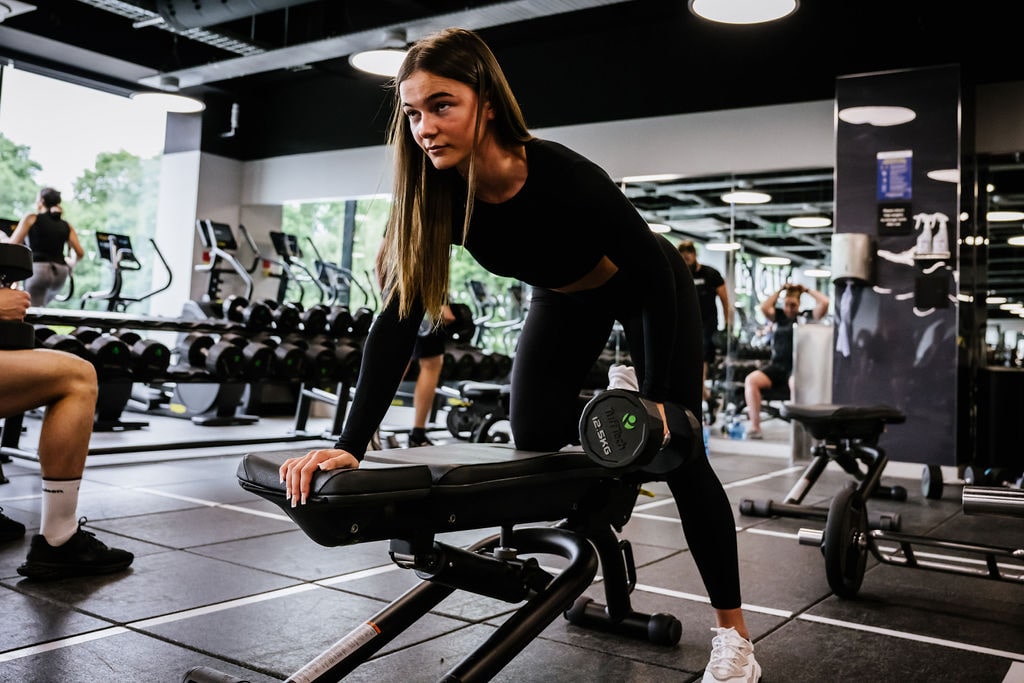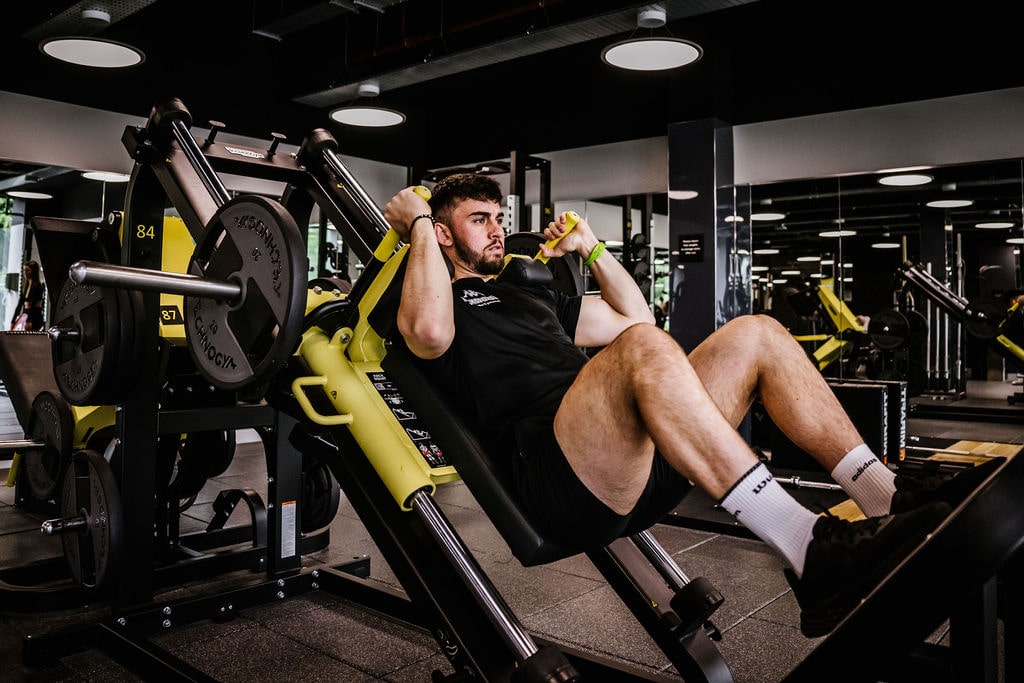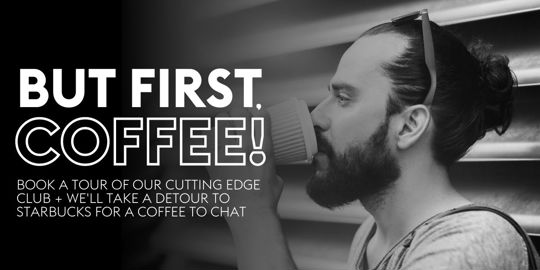Strength building is one of those things that we hear a lot in the gym world but we don’t often go into what it actually means and how it might actually fit into our workout routine.
For a very quick definition, Strength building (sometimes known as resistance training) works toward building up muscle through exercises designed for powerful bursts and lasting stability. The actual techniques are very varied since the main aim naturally opens itself up to the varying abilities of those attempting to build up their strength. This stereotype that we can associate with strength training of a large, mass focused bodybuilder intent on lifting the heaviest weight isn’t actually anywhere close to the actual reality of strength building as it is much more universal and accessible than most would imagine.
Okay so, sounds interesting but where do you get started?
Those stacks of weights might not look like much fun and the big machines might seem a bit intimidating for your regular gym goer. Like the name implies, our first priority must be toward building up your confidence and ability so that your body has the stability to test its strength.
FIRST UP, RESISTANCE BANDS
Let’s avoid the weights for now (don’t worry, we’ll come back to them later).
Resistance bands are a great starting point for anyone interested in strength building as they can help ensure your form is correct without the added pressure (and risk!) of heavy weights. Not only that, resistance bands can actually still be used when weight is added. In fact, they can help make sure your strength training remains effective by supporting the natural movement patterns as they’re put under strain.
Some good practice exercises are:
Banded Squats
More simple than it seems, banded squats are very similar to the normal squat except you’ll place the resistance band just above the top of your knees. In a slightly wider stance than usual, you have to make sure the band doesn’t pull your knees together as you squat down while making sure not to push so far so that your knee passes your feet.
Lateral band Walk
Essentially, the lateral band walk is a side step movement whereby you keep your knees bent (and hips back) in a squat like position. The band is wrapped slightly above both of your ankles, and so you’ll feel resistance as you step out. Just make sure to keep your hips level and your back straight.
Deadlift (with resistance bands)
A great starting point for anyone interested in concerning this lift. To start, stand on a longer resistance band, with your feet in the middle and your hands holding on to each end. The nearer your hands are to your feet, the higher the resistance will be as you stand up. Then consider how far you can lean forward, pushing your hips back and keeping your shins roughly vertical (a little bend in the knee is okay, but this is not a squat), and keep your back flat. This will work as your starting position, from which you can hold onto each end of the band and slowly stand up. Make sure to keep your movement slow and controlled.
Resistance band pushups
Wrap the band around your back, under your arms, and loop through the palm of your hands. Put your palms to the floor just slightly wider than your own shoulder width. Try to keep your hands aligned at about shoulder level. From this position try to complete a regular press up whether it be knees up or down, remember the more consistent the pace, the better (so don’t rush to finish!)
Remember if you ever need any help or direction when trying these exercises it’s always best to reach out to one of the team or book a Personal Training session. With a qualified professional on hand, you’ll have someone there who’s able to really make sure your form is perfect and that the exercises you’re working on are actively pushing you to smash your goals. Because hey, we want you to succeed in your own way.
NEXT UP, THE HEAVY STUFF
All our clubs are kitted with a huge selection of free weights including dumbbells up to 50kg, barbells, weight benches and squat racks so when it comes to testing your strength we got you covered.
But it’s important to remember where we started with the resistance bands: correct form is everything and be aware of what you’re actually working on. Both of these are particularly important as we start to bring in weights because we don’t want to risk putting our bodies under additional strain through awkward and uncoordinated movements.
If a curvaceous booty is what you’re looking for then your focus will be upon strengthening and toning up your glutes. A very specific and targeted goal! Our suggestion would be to add some dumbbells to your usual squat routine and increase the variation in your movement (e.g. goblet squats). But also, challenge yourself by hitting the squat racks and trying out some classic barbell deadlifts!
If you’re looking for targeted upper body work, then your focus will be on the bench press and chest press moves. These are especially exercises since they allow for a gradual build up of weight, from dumbbell to barbell to machine. As the weeks go on, you’ll slowly see yourself build up strength by moving up through the weights and variations.
Or perhaps you’re just looking to build gains and look swole. In which case the floor is yours!
FINALLY, GO GET MECHANICAL
Don’t get intimidated now. You’ve built up to this.
We offer a range of resistance equipment so what you use is entirely up to you. Like with the bands and weights though, remember to keep your goal in mind. You don’t want to be one of these gym goers who jump from machine to machine doing all kinds of weird and wonderful positions. It’s better to pick one to incorporate into your regular workout, get in club advice from the team as to how best use the equipment, and build up your confidence using said machine.
Now, there isn’t one piece of kit that works for everyone much like there isn’t one exercise that works for everyone but two popular classics include:
Lat Machine
Get comfortable because you’ve got a seat on the lat machine.
In order to use this piece of kit, you need to face the machine, grasp the long bar above your head and pull down.
Remember you’ll be primarily focused on your lats with this movement so it’s really important to keep movement controlled, the slower the better.
Delt Row
Another seated workout, the delt row works the large muscles in your shoulder.
Make sure your shoulders are parallel with the handles, then grasping the handles, pull back by using your elbows. Focus on bringing your shoulder blades together for a short second hold before returning to the starting position.
All in all, strength training is a massively beneficial approach to exercise. While it does obviously build muscle, it may surprise you can strength training can decrease body rate by increasing your metabolism (pretty amazing really). Beyond that, strength training requires correct form and control which ultimately better supports your body through day to day movement, avoiding injury and setting you up for a more comfortable week.




